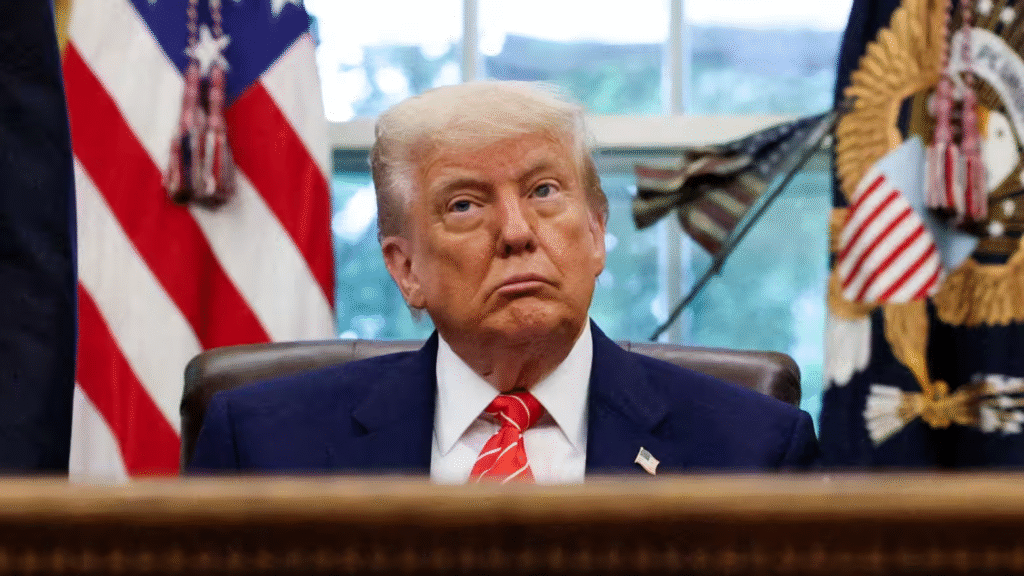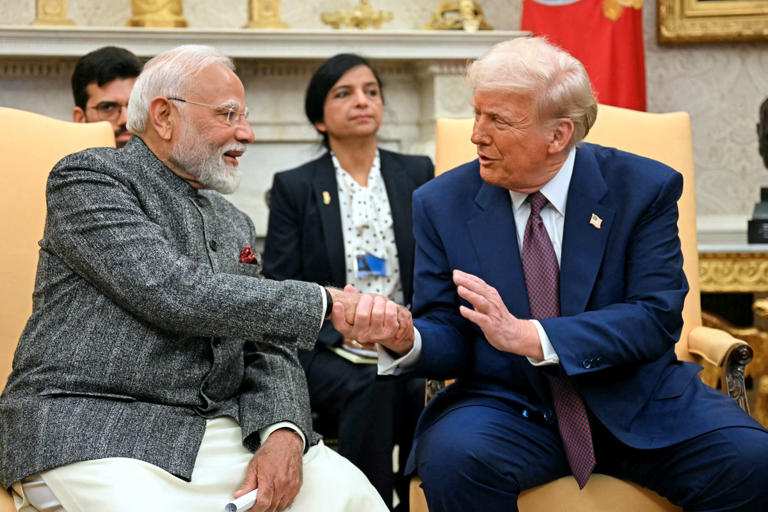Trump Boosts India-Pakistan Trade After Ceasefire: Modi-Trump Connection
On May 11, 2025, U.S. President Donald Trump announced plans to increase trade with India and Pakistan, praising their recent ceasefire agreement.

The statement follows a U.S.-mediated truce that halted intense military clashes between the two nuclear-armed neighbors. Trump’s comments, shared on Truth Social, described the ceasefire as a “job well done” and highlighted his intent to strengthen economic ties with both nations.
This development comes amid complex diplomatic efforts and a long-standing rivalry between India and Pakistan, with Trump positioning himself as a key peacemaker.
Background of the Ceasefire
The ceasefire, effective from May 10, 2025, ended four days of heavy cross-border strikes along the India-Pakistan border, particularly in Kashmir. Tensions escalated after a terrorist attack in Phalagam, prompting India’s retaliatory Operation Sindoor.

Pakistan responded with drone strikes and artillery fire, raising fears of a wider conflict. India suspended the 1960 Indus Waters Treaty, while Pakistan voided the 1972 Simla Agreement, intensifying the crisis. Both nations accused each other of violations hours after the truce, with explosions reported in Kashmir. Despite fragility, the ceasefire has held, with military hotlines reactivated to manage disputes.
Trump’s Role and Motivation
Trump claimed credit for brokering the ceasefire, stating it followed “a long night of talks mediated by the United States.” U.S. Vice President J.D. Vance and Secretary of State Marco Rubio engaged with Indian Prime Minister Narendra Modi and Pakistani Prime Minister Shehbaz Sharif over 48 hours.
However, India downplayed U.S. involvement, asserting the deal was negotiated directly between the two countries’ military operations directors. Trump’s push for increased trade reflects his broader goal to be seen as a global peacemaker, a narrative he has emphasized in conflicts like Ukraine.
By rewarding India and Pakistan with trade incentives, Trump aims to solidify U.S. influence in South Asia and counter China’s regional presence.
Trade as a Diplomatic Tool
Trump’s vow to boost trade with India and Pakistan serves as both a carrot and a strategic move. The U.S. is a major trading partner for India, with bilateral trade reaching $119 billion in 2023, while Pakistan’s trade with the U.S. was about $6 billion.
Enhanced trade could stabilize the region by fostering economic interdependence, discouraging future conflicts. However, punitive measures like India’s trade suspension and visa cancellations remain in place, complicating immediate progress.
Trump’s trade pledge also aligns with his “America First” policy, aiming to expand U.S. markets while rewarding nations that align with his diplomatic wins. Posts on X echoed Trump’s announcement, with supporters calling it a step toward regional peace.
Modi-Trump Relationship
Narendra Modi and Donald Trump share a history of public camaraderie, marked by events like the 2019 “Howdy, Modi!” rally in Houston, where they praised each other’s leadership. Their alignment stems from shared priorities: countering China, boosting trade, and addressing terrorism.
Modi’s assertive stance on Pakistan resonates with Trump’s hardline foreign policy. However, India’s insistence on direct negotiations in the ceasefire talks suggests Modi’s desire to maintain strategic autonomy.
While Pakistani Prime Minister Shehbaz Sharif thanked Trump, India’s Foreign Secretary Vikram Misri avoided crediting the U.S., reflecting Modi’s balancing act between global partnerships and national pride. Trump’s trade promise may strengthen U.S.-India ties, but Modi will likely prioritize India’s interests in any deal.
Challenges Ahead
The ceasefire’s fragility poses risks to Trump’s trade ambitions. India and Pakistan’s deep-rooted dispute over Kashmir remains unresolved, and the U.S.-brokered truce does not address core grievances. Analysts warn that without sustained dialogue, the agreement could collapse.
India’s suspension of the Indus Waters Treaty and Pakistan’s retaliatory measures add economic strain. Trump’s trade initiative may face resistance if either nation perceives it as favoring the other. Despite these hurdles, Trump’s pledge signals a U.S. commitment to South Asian stability, with trade as a tool to encourage peace.


 Trump Demands US Attorney General Share Epstein Data
Trump Demands US Attorney General Share Epstein Data  Trump Claims ‘Inflation Is Dead’ but June Surge Signals Otherwise
Trump Claims ‘Inflation Is Dead’ but June Surge Signals Otherwise  Has Trump Sided with Ukraine Over Russia in the War?
Has Trump Sided with Ukraine Over Russia in the War?  Why Did Bangladesh Choose Mangoes for PM Modi?
Why Did Bangladesh Choose Mangoes for PM Modi?  Trump Threatens Brazil with 50% Tariff Over Bolsonaro Trial
Trump Threatens Brazil with 50% Tariff Over Bolsonaro Trial